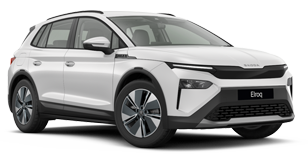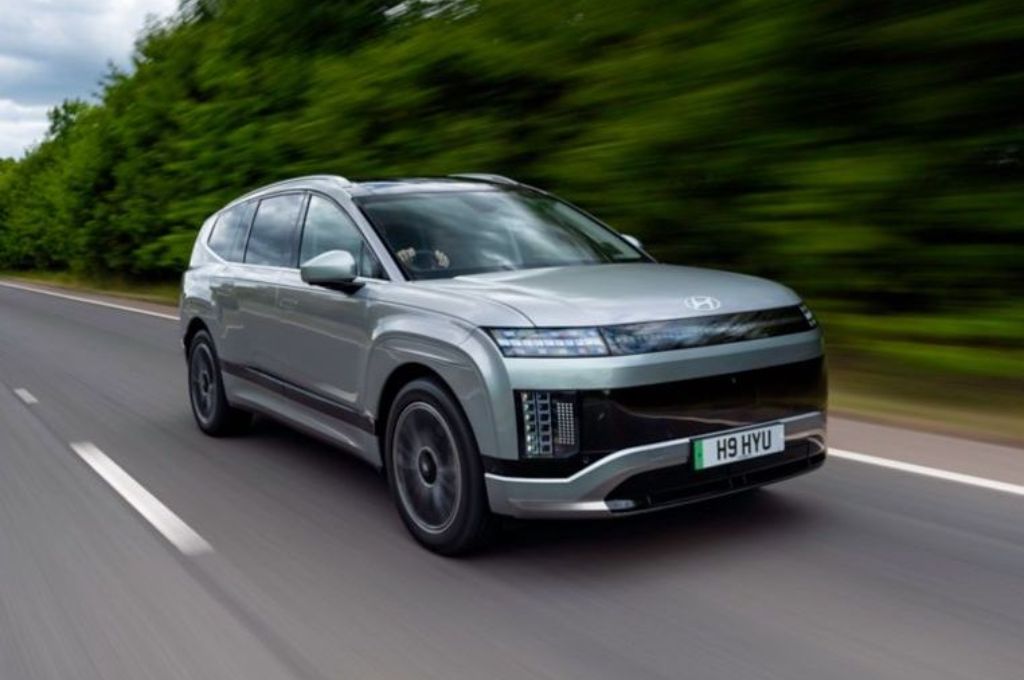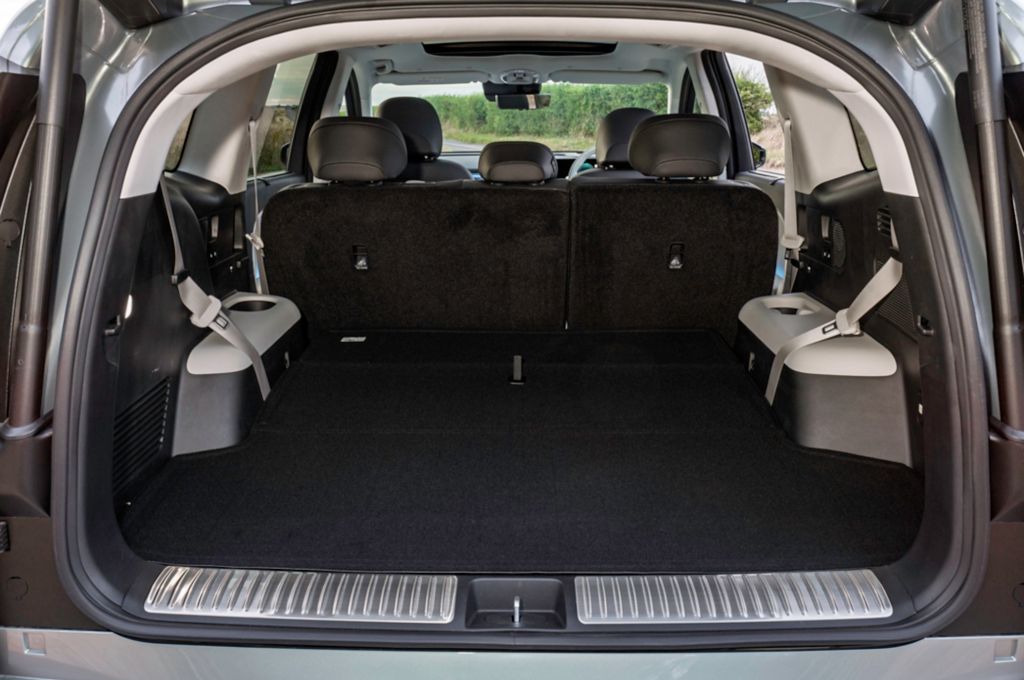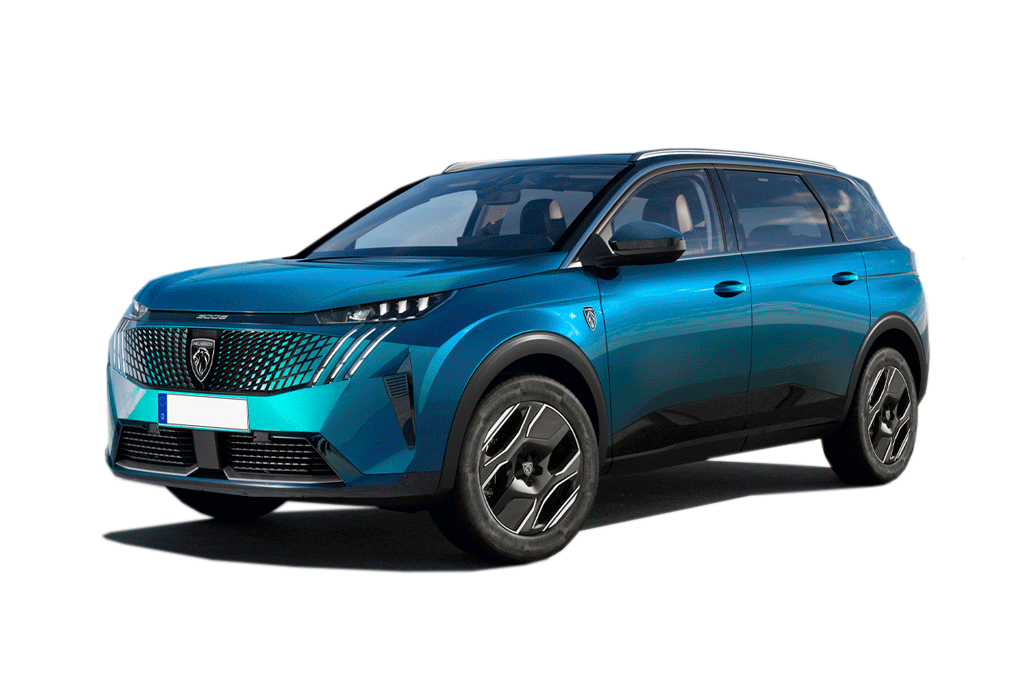Introduction
The Hyundai IONIQ 9 is big - really big! This seven-seater SUV is Hyundai’s largest vehicle to date, at over 5.0-metres long, and is clearly designed with space and practicality in mind. We’ve already had one very large car from Hyundai Motor Group—the current World Car of the Year, the Kia EV9. We love this car at Electrifying.com, and we’re expecting big things from its Hyundai sibling. The IONIQ 9 is the kind of car that will feel right at home on wide American highways but is still engineered to fit on British roads. It slots in at the top of Hyundai’s IONIQ electric lineup, going up against the likes of the Kia EV9, the Volvo EX90, BMW iX and the (slightly smaller, slightly less plush) Peugeot E-5008.

There are three powertrains on offer, including rear-wheel drive or four-wheel drive models, all with a big 110kWh lithium-ion battery that’s good for a WLTP range of up to 385 miles.
It’s a spacious, all-electric family SUV aimed at those who need serious practicality without sacrificing modern tech and design.
Range, battery and charging
The IONIQ 9 is powered by Hyundai’s largest battery yet: a 110.3 kWh pack. This gives the single-motor RWD version a WLTP-estimated range of 385 miles, slightly edging out the Kia EV9 (349 miles) and holding its own against the BMW iX (380 miles). The dual-motor AWD variant focuses more on performance, so its range will likely drop to around 330 miles.
Charging is competitive, with Hyundai claiming a 10-80% recharge in just 24 minutes using a 350 kW DC fast charger. That’s on par with rivals like the Volvo EX90 and Kia EV9. However, the IONIQ 9 adds Hyundai’s clever vehicle-to-load charging (V2L) system, letting you power appliances or devices directly from the car’s battery. Whether it’s charging your phone, powering your next camping trip, or running your coffee maker on the go, this feature adds real-world versatility. Unlike the Kia EV9, however, there are no current plans to include Vehicle-to-Grid (V2G) technology, which could allow the car’s battery to support the electrical grid.

Practicality and Boot Space
Hyundai has prioritised interior space in the IONIQ 9, which you can see in all its glory in my full walkaround video. The car’s 3,130 mm wheelbase—its longest ever—creates a roomy cabin with flexible seating for six or seven passengers. A flat floor adds to the sense of openness, while second-row seats can swivel to face the third row when stationary, turning the car into a social space. Hyundai calls this a “Universal Island,” a feature designed to maximise comfort and functionality, especially during charging stops or family outings.
Boot space is generous. It gets over 300 litres of space behind the third row, and close to 1500 with all of the seats folded. There’s also a front trunk (frunk), which is handy for smaller items. This is definitely one of the most practical electric cars you can buy; I'll tell you that right now, official figures or not. The IONIQ 9 also tows up to 2,500kg, making it one of the most capable electric tow cars.

Interior, Design/Styling and Technology
The interior is where it starts to vary from the concept quite dramatically, which, if you remember, had an ‘L’-shaped sofa to lounge around on! It also had a mini built-in fridge, an incense holder, and even a shoe sanitiser to freshen up passengers’ footwear on the move. It doesn’t get any of that. But it does get a lot of space.
The front of the IONIQ 9 is deliberately not too long to give more space to the interior. The flat floor, clean lines, and panoramic curved display create an open, modern feel. Hyundai has borrowed ideas from furniture design, with seats and surfaces inspired by the proportions of a sofa. Materials are eco-friendly, including recycled fabrics and alternatives to leather, which add to the car’s sustainability credentials.
The Universal Island 2.0 sliding console is a standout feature. It can be moved back by up to 190 mm, giving second-row passengers easy access to storage and controls. This console includes 5.6 litres of storage in the upper tray and 12.6 litres in the bottom tray, making it practical for families who need to carry lots of small items and it’s a great place to store your snacks! The first and second-row seats recline fully and come with leg rests, making them ideal for long journeys or breaks during charging stops and there’s also a massage function on top-of-the-range models.

The IONIQ 9 takes its design cues from Hyundai’s SEVEN concept, though it’s been toned down for practicality. I spoke to Hyundai’s head of design, SsangYup Lee, about the SEVEN concept when it launched, and he told me it was a ‘serious concept,’ meaning the production car would look similar. And he’s been true to his word.
Gone are the concept’s rear-hinged clamshell doors, but the overall shape—sleek, modern, and aerodynamic—remains. The long roofline slopes gently toward the rear, while flush panels and a smooth front end help achieve a low drag coefficient of 0.259, which is competitive for a large SUV.
You don’t get the squared-off wheel arches of the concept—rounded ones are better for aerodynamics. Instead, you get cladding that gives it a squared-off look via a slight optical illusion. Hyundai’s signature “Parametric Pixel” lighting gives the IONIQ 9 a distinctive look, tying it visually to the rest of the IONIQ lineup. Wheel options range from 19-inch base models to 21-inch Calligraphy wheels, inspired by aircraft turbines. Around the back, the design hints at a boat tail, with sharp edges and muscular shoulders that add presence on the road. The side profile has echoes of the first-generation Audi A2, particularly in the roofline, blending style with aerodynamic efficiency.

Motors, Performance and Handling
The IONIQ 9 is offered with three powertrain options. The single-motor RWD version delivers 215bhp, with a 0-62 mph time of 9.4 seconds. The Long Range AWD variant boosts power to 308bhp, cutting the sprint to 6.7 seconds. For those who want more punch, the Performance AWD model delivers 429bhp, hitting 62 mph in 5.2 seconds. That’s on par with competitors like the BMW iX xDrive50, though it doesn’t aim to be as sporty. The IONIQ 9 also offers an iAuto Terrain Mode, which uses AI to adapt the car's settings for different road conditions.
Sitting in the driver’s seat, you get a really great view down the road and even pretty decent visibility to the back of the car despite it’s size.

Before I get into driving I want to talk about noise, because this interior is incredibly quiet. One of the problems with an EV is that they are so quiet that it can actually make you more aware of road noise. The Ioniq 9 is fitted with a new system that works in a similar way to noise cancelling headphones; it listens for tyre- and wind-noise and then cancels it out. In fact, it only takes about 0.002 seconds for the system to detect a sound, analyse it, and produce a perfectly opposite sound wave to get rid of it - and each seat, front and back, gets its own tailored noise cancellation. And it does make this a very relaxing, calm car to drive. If only Hyundai could come up with something to cancel out the noise of children in the back, it'd be perfect!
It’s also very smooth and comfortable to drive, and feels surprisingly light in terms of its steering and the way it goes round corners. This is the Long-Range AWD version, and honestly, for a car of this size it's surprisingly nimble. It doesn't feel as bulky on the road as it looks - although it can be a squeeze getting it into some smaller UK parking spaces given that it's so long. I drove it on a mixture of small B roads, larger A roads and the motorway and it handled all of them well.

This is the punchiest Performance AWD model, which gets 423 bhp from dual electric motors, so it manages this 2.6-tonne beast with ease. What I will say is that if you really put your foot down there's a very slightly delay before that power kicks in. A bit like an old school turbo!
Regenerative braking has four levels, controlled by the paddles behind the steering wheel and the highest puts you into a one-pedal driving mode that feels smooth and progressive and is perfect for driving around town.
Not so good? I don't love the steering as it feels a bit numb and lifeless, and the ride can feel a bit lumpy over scruffy roads - although I suspect the fact that this top of the range model is riding on huge 21-inch wheels doesn't help. Four-wheel steering (which you'll find on rivals like the BMW iX), so the turning circle can make tight parking manoeuvres a bit tricky.
Speaking of parking - let's talk about the optional side-view cameras, which replace the side mirrors. I don't normally love these, but they are better than others I've used thanks to a wider field of vision and some helpful lines which show you where you'll end up when you overtake. I still wouldn't spec them, personally, but they're definitely the best I've used.
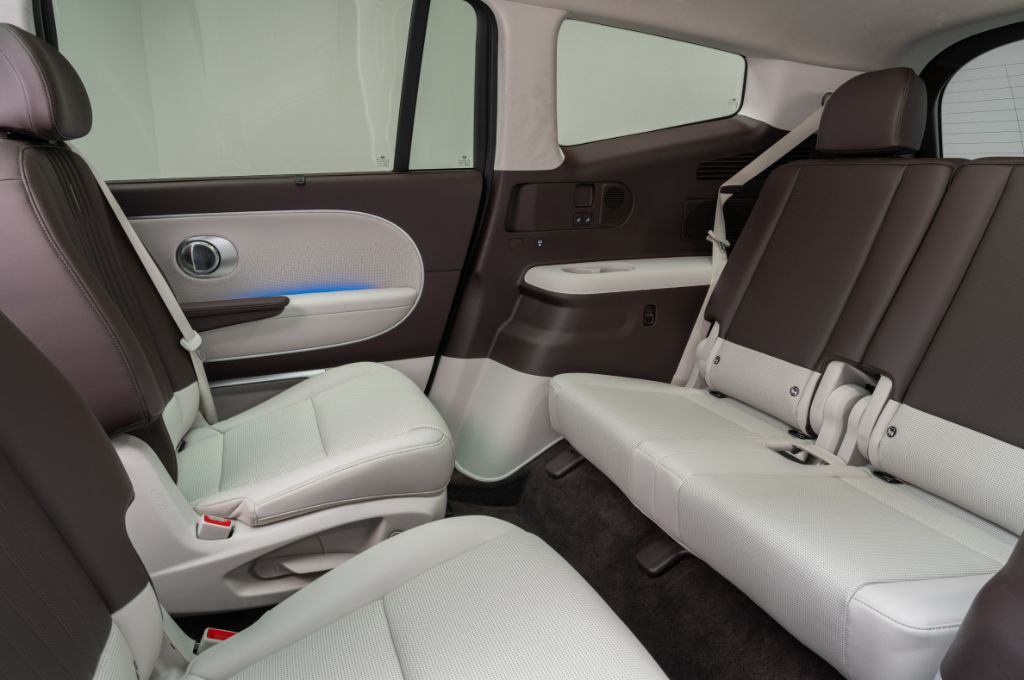
Running costs and pricing
The base-level IONIQ 9 Premium trim kicks off with 19-inch alloy wheels, LED cube projection headlights, flush-fit automatic door handles, a powered tailgate, and a trio of climate zones in the cabin, plus those 12.3-inch screens for infotainment and driver information - complete with wireless Apple CarPlay and Android Auto. There's also a heated steering wheel, wool and leather-effect seats, and USB-C charging ports including two 100W fast-charging outlets in the front of the car.
Buyers choosing the mid-spec Ultimate model get 20-inch alloys, leather upholstery, a panoramic sunroof, ventilated rear seats and Hyundai’s Ergo Motion front seat with massage functions. This trim also introduces Hyundai’s Active Noise Control-Road (ANC-R) system, which uses sensors and microphones to cancel out road noise in real-time using the vehicle’s sound system.

At the top of the range sits the Calligraphy. This model adds body-coloured wheel arches, 21-inch alloys and bespoke bumpers. Inside, it features Nappa leather upholstery, a UVC sterilisation tray, and the option of a flexible six-seat configuration with rotating second-row 'captains' chairs. You have to go for this top-spec trim to get the dual-motor, all-wheel-drive setup, too.
Safety is well-covered with ten airbags, including airbags for third-row passengers, and seatbelt pre-tensioners for all rows. Advanced Driver Assistance Systems (ADAS) include Forward Collision-Avoidance Assist, Lane Keeping Assist, and Blind-Spot Monitoring, features that match the safety tech offered by rivals like the Volvo EX90.
Verdict
With its thoughtful design, practical interior and competitive pricing, the IONIQ 9 is well-positioned to take on key rivals including the Kia EV9, and having spent time with it in the UK, I think it'll do really well. I do think that the Kia has a slightly better ride comfort, but if you're in the lucky position to be deciding between this and the Kia, I suspect it'll come down to which of these cars you can get the best deal on - and which you best like the looks of. I think I prefer the Kia's styling, but a lot of the Electrifying team reckon they favour the slightly estate-like looks of the Hyundai.
Let us know which you'd have in the comments of the YouTube video, but suffice to say that the IONIQ 9 is a brilliant seven-seat EV.





